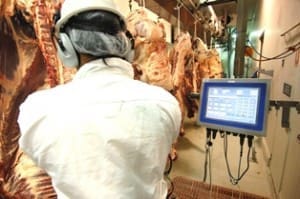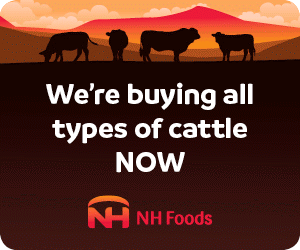DIRECT consignment price grids took another hit this week, as big inflows of cattle forced by drought decision-making continue to come to market across eastern Australia.
 Last week’s seven day eastern states beef kill reported by the National Livestock Reporting Service had the five-state tally at 146,867 head, a new 2019 season-high, up 11pc on this time last year.
Last week’s seven day eastern states beef kill reported by the National Livestock Reporting Service had the five-state tally at 146,867 head, a new 2019 season-high, up 11pc on this time last year.
Direct consignment cow prices in the southern Queensland and northern NSW region have fallen anywhere from 5-20c/kg in places in the past seven days (declines dependent on each processor’s relative price position the week before), while steer prices are generally 5-10c/kg cheaper.
Quotes from competitive processors in southern Queensland this morning included 490-515c/kg for four-tooth grassfed heavy steer, depending on the plant’s location, and 420-435c/kg on heavy cows. Some grids have expanded the price differential between lighter and heavier cows, reflecting the sheer number of lighter cows now being slaughtered due to drought.
One processor told Beef Central this morning that while there was money to be made in processing heavier cows in the current export meat market, anything below 220/230kg carcase weight was a breakeven proposition or best, because kill costs were virtually the same for a heavier or lighter beast, regardless of how much boneless beef it produced. That assessment was based on a typical plant set up for heavy cattle, rather than a hot-boning style plant, where Enterprise Bargaining Agreements could be better suited to handle light cattle.
Dismal prices for light cow hides on the international market only added to the financial challenge in slaughtering light cows recently.
 Big numbers are expected in Queensland saleyards this week, with Dalby tomorrow expecting to yard 8500 head, on top of 7500 at Roma today, and more than 2000 at Warwick.
Big numbers are expected in Queensland saleyards this week, with Dalby tomorrow expecting to yard 8500 head, on top of 7500 at Roma today, and more than 2000 at Warwick.
Processors spoken to for this report suggest they have solid direct consignment bookings ahead of them for early March, with some taking placements for week commencing March 18.
Coming off an already low base after dry conditions last year, 2018-19 is now shaping up as arguably the biggest reduction in national herd size in history, as the drought’s footprint extends all the way from the Barkly Tableland into northern Victoria.
The JBS Townsville plant returned to work after recent flood impact yesterday, opening up with a daily tally of 660 head. Cattle supply in the north is still being impacted by the northern rail line closure caused by flood damage, and secondary road closures from Hughenden west.
Queensland’s kill last week rose 1pc to around 73,500 head, while the NSW kill at 35,400 fell 2pc on the week before. Victoria’s kill last week was 26,800 head, down 2pc, while South Australia was 16pc higher at 6100; Tasmania was unchanged at 5100.
